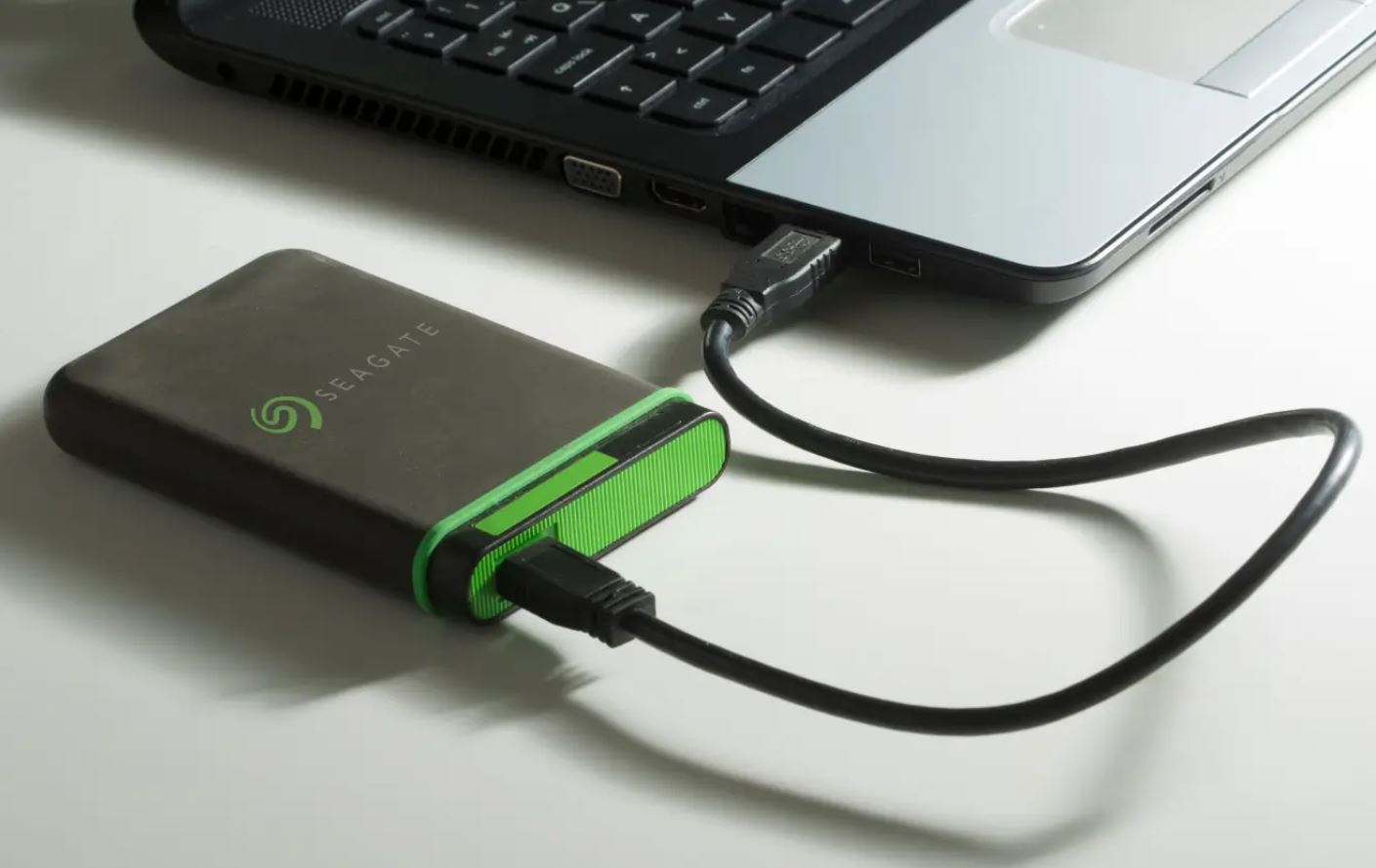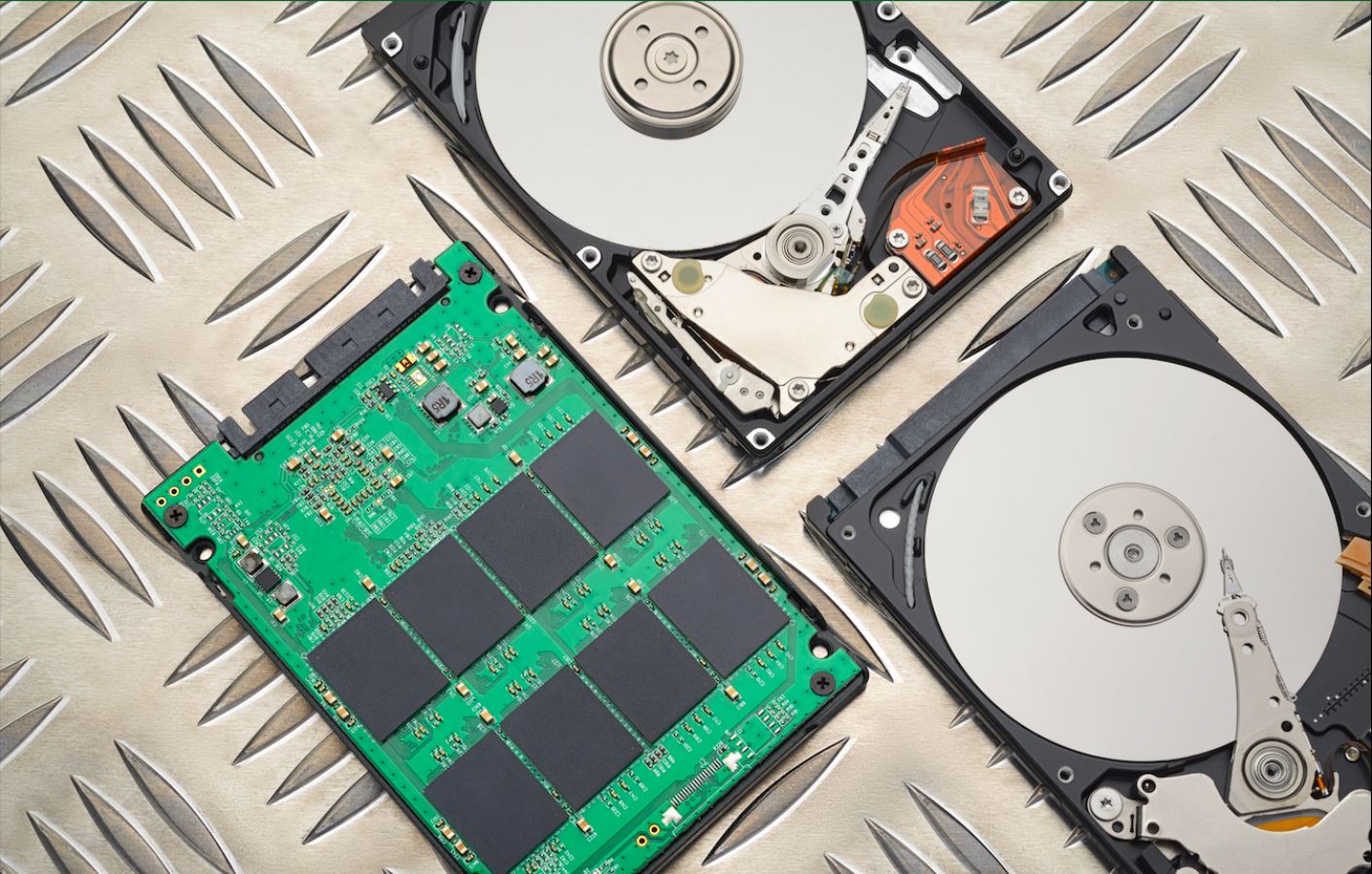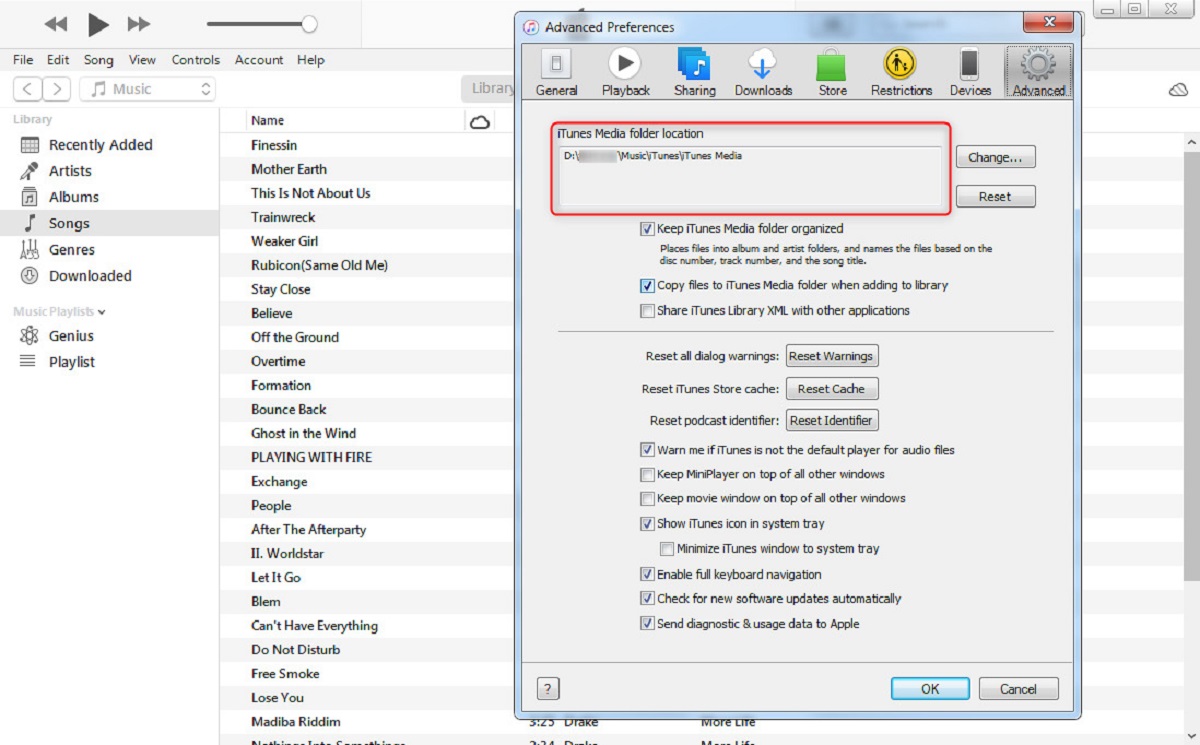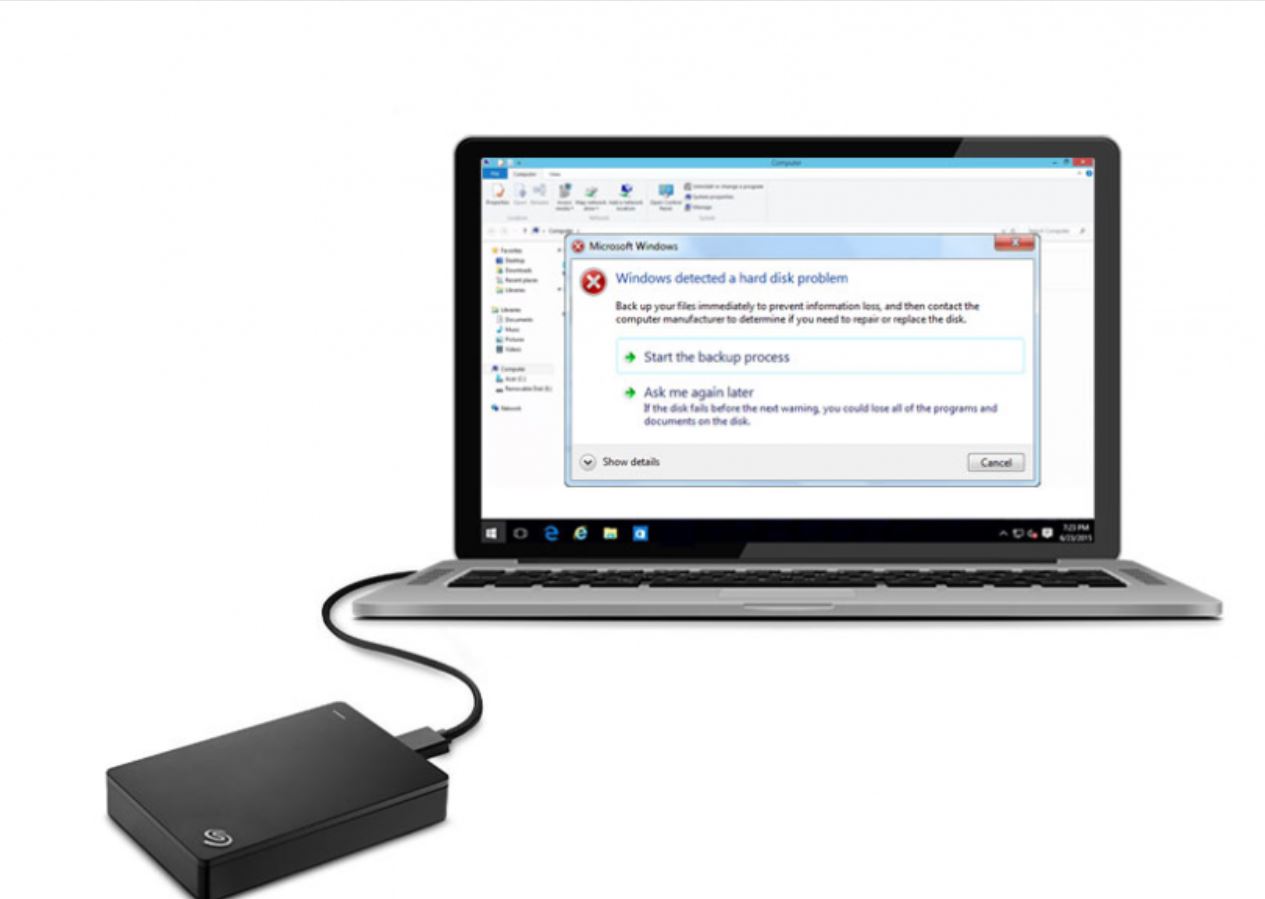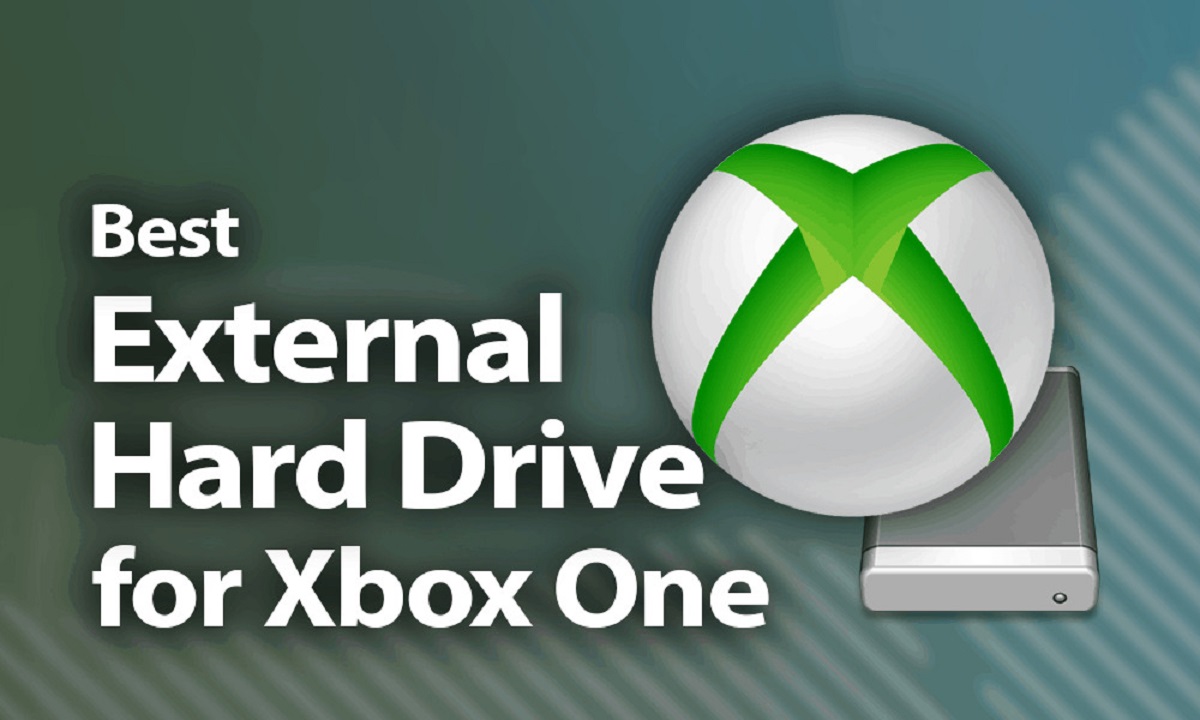Introduction
Have you ever experienced a perplexing situation where your external hard drive displays that it is full, even though you are sure that there is still plenty of storage left? If so, you are not alone. Many individuals encounter this issue and wonder why their external hard drives are showing incorrect storage capacity. In this article, we will explore the various reasons behind this frustrating problem and provide you with some possible solutions.
Understanding the storage capacity of your external hard drive is crucial for managing your data effectively. Knowing how much free space you have helps you determine whether you need to delete unnecessary files, transfer data to another storage device, or organize your files more efficiently. However, it can be frustrating and confusing when your hard drive indicates that it is full but, in reality, it is not.
There are several common reasons why your external hard drive might display incorrect storage capacity. One potential factor is the presence of hidden files and folders that may take up space without your knowledge. Additionally, backup and system files, as well as temporary files, can contribute to the discrepancy between the displayed and actual storage capacity.
Fragmentation, which occurs when files are split into fragments across your hard drive, and file system issues, such as errors or inconsistencies, can also impact the accuracy of storage capacity. Other factors, such as the presence of files in the Recycle Bin or the impact of malware or viruses, can further contribute to the issue.
Fortunately, there are steps you can take to address this problem and potentially regain the correct storage capacity on your external hard drive. These include checking for hidden files, emptying the Recycle Bin, using disk cleanup and optimization tools, and scanning for malware or viruses.
In the following sections of this article, we will delve deeper into each of these potential causes and provide you with detailed instructions on how to rectify them. By the end, you should have a clearer understanding of why your external hard drive might be displaying incorrect storage capacity and how to resolve the issue effectively.
Understanding Storage Capacity
Before we explore the reasons behind incorrect storage capacity displays on external hard drives, it is essential to understand how storage capacity is measured and the factors that can affect it.
Storage capacity is typically measured in bytes, with larger units such as kilobytes (KB), megabytes (MB), gigabytes (GB), and terabytes (TB). Each unit represents an increasing amount of data that can be stored. For instance, a 1 KB file is smaller than a 1 MB file, and a 1 GB storage device can hold more data than a 1 MB storage device.
However, the actual available storage space on a drive can be less than its advertised capacity because of the way storage devices are formatted and the file system used. When a drive is formatted, a portion of the available space is reserved for system files and data structures that facilitate the organization and retrieval of data. This reserved space is necessary for the proper functioning of the drive but reduces the overall usable capacity.
Another factor that can contribute to the difference between advertised and usable storage capacity is the discrepancy between decimal and binary calculations. Computers use a binary numbering system, while manufacturers define storage capacity based on a decimal system. This means that when a manufacturer states that a drive has, for example, 1 TB of storage capacity, the computer recognizes it as slightly less due to the conversion from decimal to binary.
Additionally, while operating systems and file systems allocate space for files, there may be overheads involved that consume some of the available storage. These overheads can include file metadata, directory structures, and system files that are necessary for organizing and managing the data on the drive.
Understanding these factors is essential because they can impact the displayed storage capacity on your external hard drive. It is important to keep in mind that a certain percentage of the advertised capacity will always be reserved for system files and data structures, reducing the available storage space.
Now that we have a basic understanding of storage capacity and its influencing factors, let’s delve into the common reasons why external hard drives might display incorrect storage capacity and explore potential solutions.
Common Reasons for Incorrect Storage Capacity Display
There are several common reasons why your external hard drive may show incorrect storage capacity. Familiarizing yourself with these factors can help you identify the underlying issue and take appropriate measures to resolve it.
One common reason for the discrepancy is the presence of hidden files and folders on the external hard drive. These files are typically set to be hidden from view by default, and they can consume a significant amount of storage space without your knowledge. Hidden files can include system files, backup files, or temporary files generated by applications. To reveal these hidden files, you can adjust the settings on your computer to show hidden items and then manually delete unnecessary ones.
Another factor contributing to the incorrect storage capacity display is the presence of backup and system files. When you create backups or perform system maintenance, these files are often stored on the external hard drive. Over time, these files can accumulate and take up valuable storage space. Deleting old backup files or using software tools designed to manage backups can help reclaim the occupied storage.
The Recycle Bin is another often overlooked culprit. When you delete files, they are usually sent to the Recycle Bin rather than being permanently removed. The files in the Recycle Bin continue to occupy storage space until you empty it. By emptying the Recycle Bin regularly, you can recover significant amounts of storage capacity.
Temporary files, including cached data and temporary internet files, can also contribute to the incorrect storage capacity display. These files are generated when you use applications or browse the internet, and they can accumulate rapidly. Utilizing disk cleanup tools or deleting temporary files manually can help free up storage space.
Fragmentation and file system issues can also impact the accurate display of storage capacity. Fragmentation occurs when files are split into fragments and scattered across the hard drive. This can lead to inefficient use of storage space and an inaccurate capacity display. Running disk defragmentation tools can help optimize storage and resolve fragmentation issues. Additionally, file system errors or inconsistencies can result in storage space discrepancies. Using the built-in error-checking tools or specialized third-party software can help identify and fix these file system issues.
In the next sections, we will explore specific steps and solutions for each of these common reasons for incorrect storage capacity display. By addressing these issues, you can regain the correct storage capacity on your external hard drive and better manage your data.
Hidden Files and Folders
Hidden files and folders can significantly contribute to the incorrect storage capacity display on your external hard drive. These files are typically set to be hidden by default, meaning they are not visible when browsing through the drive’s contents. However, they still occupy storage space and can accumulate over time without your knowledge.
Hidden files can include various types of data, such as system files, backup files, or temporary files generated by applications. These files are essential for the proper functioning of your operating system and installed software, but they may not be necessary or useful for everyday use. Therefore, it is important to identify and remove unnecessary hidden files to reclaim storage capacity.
To reveal hidden files and folders, you need to adjust the settings on your computer. Here’s how to do it on Windows and Mac operating systems:
Windows:
- Open Windows Explorer or File Explorer by pressing the Windows key and E simultaneously.
- Click on the “View” tab in the toolbar at the top.
- Check the box that says “Hidden items” in the “Show/hide” section.
Mac:
- Open Finder by clicking on the Finder icon in the dock.
- Click on the “Finder” tab in the menu bar at the top of the screen.
- Select “Preferences” from the drop-down menu.
- Click on the “Advanced” tab.
- Check the box that says “Show all filename extensions” and “Show Library folder” in the “Show these items in the Finder” section.
Once you have enabled the display of hidden files and folders, navigate to your external hard drive and examine its contents. Look for any files or folders that you don’t recognize or no longer need. Be cautious when deleting files since some hidden files are necessary for system stability.
To delete unwanted hidden files, simply select them and press the delete key, or right-click on them and choose the “Delete” option. You may be prompted to confirm the action, so make sure to review the files and only remove those that you are certain are unnecessary.
By removing hidden files and folders, you can free up valuable storage capacity on your external hard drive. Ensure that you exercise caution while deleting files, as deleting essential system files can cause issues with your operating system. If you are unsure about a file’s purpose, consider researching it online or seeking assistance from technical support before removing it.
Backup and System Files
Backup and system files can often contribute to the incorrect storage capacity display on your external hard drive. These files are created during system backups or system maintenance operations and can accumulate over time, taking up valuable storage space.
Backup files are essential for protecting your data in case of any unforeseen issues or data loss. However, outdated or unnecessary backup files can occupy a significant amount of storage. It is important to review and manage your backups regularly to ensure that you are only retaining what is necessary.
To address backup files that are consuming storage space, follow these steps:
1. Identify the backup software or utility you are using. Common backup tools include Windows Backup and Restore, Time Machine for Mac, or third-party backup software like Acronis or Carbonite.
2. Open the respective backup software and access the settings or options related to backup management, retention, or deletion.
3. Review the backup files that are currently stored on your external hard drive. Look for outdated or unnecessary backups, such as those for files or applications you no longer use or backups that have reached their retention periods.
4. Select and delete the backup files that are no longer needed. Ensure that you are confident in your selection and that you have alternative backup options or copies of important data.
System files are another category of files that can occupy storage space on your external hard drive. These files are essential for the proper functioning of your operating system and installed software. However, certain system files can be safely removed to free up storage capacity.
To manage system files and reclaim storage space, follow these steps:
1. Be cautious when deleting system files, as removing the wrong files can result in the malfunctioning of your operating system or installed software. If you are uncertain about a specific system file, seek guidance from technical support or online forums.
2. Use built-in tools or third-party software designed for system maintenance and cleanup. These tools can help identify and remove unnecessary system files, such as old Windows update files or temporary files generated by the operating system.
3. Follow the instructions provided by the selected tools to scan for and delete unnecessary system files. Pay attention to the recommendations or options presented to ensure that you are only removing files that are safe to delete.
By effectively managing backup and system files, you can regain valuable storage capacity on your external hard drive. Remember to exercise caution when deleting any files, and always have proper backups or alternative storage solutions in place to safeguard your important data.
Recycle Bin and Temporary Files
The Recycle Bin and temporary files can contribute to the incorrect storage capacity display on your external hard drive. When you delete files, they are often sent to the Recycle Bin rather than being permanently removed. The files in the Recycle Bin continue to occupy storage space until you empty it.
To address the Recycle Bin and reclaim storage space on your external hard drive, follow these steps:
1. Double-click on the Recycle Bin icon located on your desktop or open it from the file explorer window.
2. Review the files listed in the Recycle Bin. These are the files that have been deleted from your computer but not permanently removed.
3. If you are certain that you no longer need the files in the Recycle Bin, right-click on the Recycle Bin icon and select “Empty Recycle Bin” from the context menu. Confirm the action when prompted. This will permanently delete all the files in the Recycle Bin and free up storage space.
In addition to the Recycle Bin, temporary files are another culprit that can consume storage space on your external hard drive. Temporary files are created by various applications and processes while you use your computer. These files are typically not necessary to keep and can accumulate over time, affecting storage capacity.
To remove temporary files and reclaim storage space, follow these steps:
1. Press the Windows key and R simultaneously to open the Run dialog box on Windows. Type “%temp%” (without quotes) and press Enter. This will open the temporary files folder.
2. Select all the files in the folder and press Shift + Delete to permanently remove them. Confirm the action if prompted. Note that some files may be in use and cannot be deleted. Skip those files and delete the rest.
3. Repeat the process for other temporary file locations, such as the “Temp” folder in your user directory (e.g., C:\Users\YourUserName\AppData\Local\Temp) and the “Prefetch” folder (e.g., C:\Windows\Prefetch).
By emptying the Recycle Bin and removing temporary files, you can free up a significant amount of storage capacity on your external hard drive. Regularly performing these actions can help maintain optimal storage space and improve the accuracy of the storage capacity display.
Fragmentation and File System Issues
Fragmentation and file system issues can contribute to the incorrect storage capacity display on your external hard drive. Fragmentation occurs when files are split into fragments and scattered across the hard drive. This can lead to inefficient use of storage space and an inaccurate capacity display. File system issues, such as errors or inconsistencies, can also impact the accuracy of storage capacity.
To address fragmentation and file system issues, follow these steps:
1. Run a disk defragmentation tool to optimize your external hard drive’s storage. Windows users can access the built-in Disk Defragmenter tool by searching for it in the Start menu or using the “defrag” command in the command prompt. Mac users have the option to use third-party defragmentation software like iDefrag or Drive Genius.
2. Follow the instructions provided by the selected defragmentation tool to analyze and defragment your external hard drive. This process rearranges fragmented files and organizes them in a more efficient way, which can improve storage capacity accuracy.
As for file system issues, you can perform a disk check to identify and fix any errors or inconsistencies. Here’s how to do it on Windows and Mac operating systems:
Windows:
- Open File Explorer by pressing the Windows key and E simultaneously.
- Right-click on the external hard drive and select “Properties” from the context menu.
- Go to the “Tools” tab and click on “Check” under the “Error-checking” section.
- Follow the on-screen instructions to scan and fix any file system issues on the drive.
Mac:
- Open Finder by clicking on the Finder icon in the dock.
- Select the external hard drive from the left sidebar.
- Click on the “File” menu and choose “Get Info”.
- In the pop-up window, click on the “Verify Disk” button.
- Wait for the verification process to complete and follow any prompts to fix detected issues.
By running a disk defragmentation tool and checking for file system issues, you can improve the efficiency of your external hard drive’s storage and potentially resolve storage capacity display discrepancies.
Disk Cleanup and Optimization
Disk cleanup and optimization can play a significant role in managing your external hard drive’s storage capacity and ensuring accurate display of available space. Over time, your drive can accumulate unnecessary files and data that take up valuable storage. Performing a disk cleanup can help remove these files and free up storage capacity.
To perform a disk cleanup, follow these steps on Windows:
1. Open File Explorer by pressing the Windows key and E simultaneously.
2. Right-click on your external hard drive and select “Properties” from the context menu.
3. In the Properties window, go to the “General” tab and click on the “Disk Cleanup” button under the “Capacity” section.
4. The Disk Cleanup utility will calculate how much space you can free up on the drive. Check the boxes next to the file types you want to delete, such as temporary files, cached data, or old system files.
5. Click on “OK” and then select “Delete Files” to confirm. The utility will remove the selected files and free up storage capacity on your external hard drive.
On Mac, you can perform a similar cleanup process using the built-in system utility:
1. Open Finder and select the external hard drive from the left sidebar.
2. Click on the “File” menu and choose “Get Info”.
3. In the pop-up window, check the available storage and click on the “Manage” button.
4. The utility will analyze the drive and present you with different cleanup options, such as removing old backups, emptying the trash, or optimizing storage by storing files in iCloud.
5. Select the options that suit your needs and follow the prompts to perform the cleanup process.
In addition to disk cleanup, optimizing your external hard drive’s performance can also improve storage capacity display. This can include activities such as removing unnecessary startup programs, disabling indexing, or configuring power settings to prevent the drive from entering sleep mode too quickly. By reducing unnecessary processes and ensuring efficient power management, you can enhance the capabilities of your external hard drive and potentially resolve storage capacity discrepancies.
Performing regular disk cleanup and optimization can help maintain an accurate display of available storage space on your external hard drive. It is recommended to schedule these tasks on a periodic basis to ensure optimal performance and storage capacity management.
Checking for Malware or Viruses
Malware and viruses can not only pose a security risk to your external hard drive but also impact the storage capacity display. Some malicious programs may create hidden files or use up storage space without your knowledge, resulting in an incorrect display of available storage. It is important to regularly check for malware or viruses and remove any potential threats from your external hard drive.
To check for malware or viruses, follow these steps:
1. Update your antivirus software to ensure you have the latest virus definitions and protection.
2. Perform a full scan of your external hard drive using your installed antivirus software. This may take some time, as the software will thoroughly examine all files and folders on the drive.
3. Pay attention to any malware or virus alerts provided by the antivirus software. If any threats are detected, follow the recommended actions to remove or quarantine the malicious files.
If you do not have antivirus software installed on your computer, consider downloading and installing a reputable antivirus program. There are both free and paid options available, each with its own set of features and protection levels. Some popular antivirus software options include Avast, AVG, Norton, and McAfee.
In addition to scanning for malware or viruses, it’s important to keep your operating system and other software up to date. Regularly installing updates and security patches can help protect against vulnerabilities and reduce the risk of malware or viruses infecting your external hard drive.
By regularly checking for malware or viruses and taking necessary actions to remove any threats, you can ensure the security of your external hard drive and maintain accurate storage capacity display.
Final Thoughts
Managing the storage capacity of your external hard drive is crucial for efficient data organization and usage. Various factors can contribute to the incorrect display of available storage space, including hidden files, backup and system files, the Recycle Bin, temporary files, fragmentation, file system issues, and even malware or viruses. However, by understanding these factors and following the appropriate steps, you can regain accurate storage capacity information and optimize your external hard drive’s performance.
Start by revealing and removing any hidden files and folders that are taking up space on your external hard drive. Be cautious when deleting files and ensure you are not removing any essential system files. Next, review and manage backup and system files, deleting outdated or unnecessary backups to free up storage. Emptying the Recycle Bin and removing temporary files are also effective ways of reclaiming storage capacity.
In addition, addressing fragmentation and file system issues can significantly improve the accuracy of storage capacity display. Running a disk defragmentation tool or performing a disk check can optimize storage usage and resolve discrepancies.
Furthermore, regular disk cleanup and optimization activities, such as removing unused startup programs and configuring power settings, can help maintain available storage and enhance overall performance.
Finally, it is essential to regularly check for malware or viruses that can impact both security and storage capacity. Ensure that you have reliable antivirus software installed and perform regular scans of your external hard drive.
By taking these steps and practicing proactive storage management, you can maintain an accurate display of storage capacity on your external hard drive and ensure efficient usage of available space. Remember to backup important data, exercise caution when deleting files, and seek professional assistance if you are uncertain about any actions.










